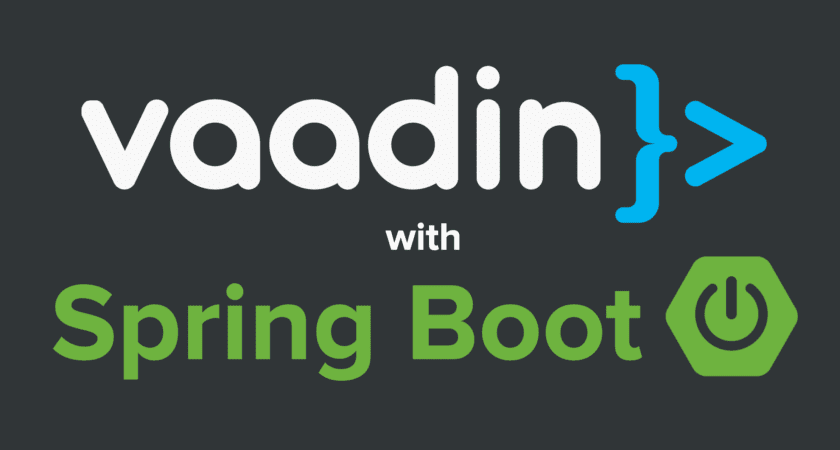Introduction to Vaadin
Vaadin is a Java framework that is designed to create and maintain high-quality web-based user interfaces easy. Vaadin supports two different programming models: server-side and client-side. The server-driven programming model is the more powerful one. It lets you forget the web and program user interfaces much like you would program a desktop application with conventional Java toolkits such as AWT, Swing, or SWT. But easier.
A Vaadin Framework application runs as a Java Servlet in a servlet container. The Java Servlet API is, however, hidden behind the framework. The user interface of the application is implemented as a UI class, which needs to create and manage the user interface components that make up the user interface.
Vaadin Fundamentals
A full-stack Java framework called Vaadin is used to create web apps with intricate user interfaces (UIs). It has several capabilities that facilitate the development of web applications, such as:
- Component-based development: Applications for Vaadin are constructed using components. Application components are self-contained user interface pieces that are simple to add and remove from programs.
- Server-side rendering: Applications developed using Vaadin are rendered on the server. In other words, a single request is sent to the server to construct the user interface and provide it to the client. Performance and scalability are enhanced since the client is spared from rendering the user interface.
- Declarative programming: Declarative programming is used in the declaration of Vaadin apps. This frees up developers to concentrate on designing the UI’s layout and style rather than creating the necessary code to make it work.
- Web standards: The foundation of Vaadin apps is web standards including HTML, CSS, and JavaScript. They are therefore compatible with all widely used browsers and gadgets.
Here are some of the fundamentals of Vaadin:
- Components: The fundamental units of Vaadin applications are Vaadin components. Numerous UI elements, including buttons, text boxes, tables, and charts, can be made using components.
- Layouts: Components on a page are arranged using layouts. Many pre-built layouts are available in Vaadin, including the VerticalLayout and HorizontalLayout. Developers are also able to design unique layouts on their own.
- Data binding: Data can be linked to components through data binding. Developers can now more easily design dynamic user interfaces (UIs) that update automatically when data changes.
- Events: When Vaadin components are used, they have the ability to produce events. When these events happen, developers can keep an ear out for them and react accordingly.
Building User Interfaces with Vaadin
With the help of Vaadin, a full-stack web development framework, creating dynamic and complex Java user interfaces (UIs) is simple. Declarative design is how Vaadin UIs are created; this means that you write the UI’s code, and Vaadin handles the browser rendering.
Vaadin has an extensive collection of user interface elements, such as menus, buttons, text fields, tables, charts, and more. Vaadin components are also quite customizable, so you can design user interfaces (UIs) that are tailored to your own requirements.
Here are some of the key benefits of using Vaadin to build UIs:
- Declarative approach: Vaadin’s declarative approach makes UI development faster and easier. You don’t need to worry about creating low-level JavaScript or CSS code.
- Comprehensive component library: Vaadin offers a large selection of UI elements, including all the necessary elements for creating cutting-edge online apps.
- Customization: Vaadin components are quite adaptable, so you can design user interfaces (UIs) that are tailored to your own requirements.
- Mobile-friendly: Vaadin UIs are mobile-friendly and responsive, so they look great on all devices.
- Server-side rendering: Vaadin UIs are rendered on the server, which makes them faster and more SEO-friendly.
You must first create a Vaadin project in order to design a user interface. The Vaadin IDE plugin or the Vaadin CLI can be used for this. After creating a project, you can begin assembling your user interface by including elements into a layout.
Vaadin has a range of layouts, including tabbed, grid, and horizontal and vertical layouts. Additionally, you can design your own unique layouts.
Advanced Topics and Real-World Applications
Advanced topics in Vaadin include:
- Advanced application architectures: The Model-View-Presenter (MVP) pattern, Model-View-Controller (MVC) pattern, and Component-Based Development (CBD) pattern are just a few of the advanced application architectures that Vaadin offers.
- Client-side development: Using Vaadin, you may create client-side JavaScript, HTML, and CSS components. This can be helpful for integrating with already-existing web apps or for designing unique user experiences.
- Server push: Server push, which enables data to be sent from the server to the client without the client needing to request it, is supported by Vaadin. For the creation of real-time applications, this can be helpful.
- Security: Vaadin offers several capabilities, including as encryption, authorization, and authentication, to assist you in securing your web applications.
Real-world applications of Vaadin include:
- Business Intelligence (BI) systems: Vaadin can be used to develop BI systems that provide users with insights into their business data.
- Content Management Systems (CMS): Vaadin can be used to develop CMS systems that allow users to create, manage, and publish web content.
Conclusion
To sum up, Vaadin is a strong Java web framework that makes it easier to create cutting-edge, interactive online apps. It is a top option for Java developers due to its strong component model, broad ecosystem, and server-client communication. Vaadin simplifies UI development and provides a neat and efficient Java web application building solution.Read about our other post at codingshikho.com
